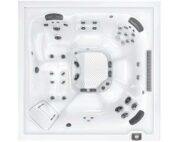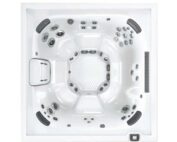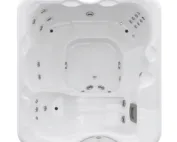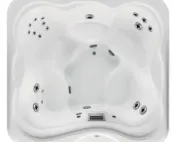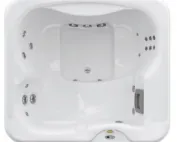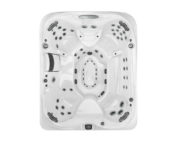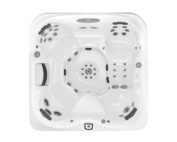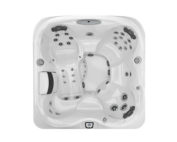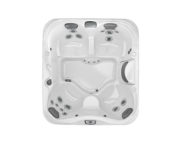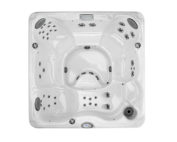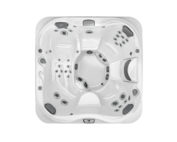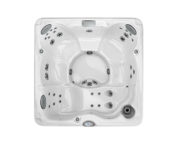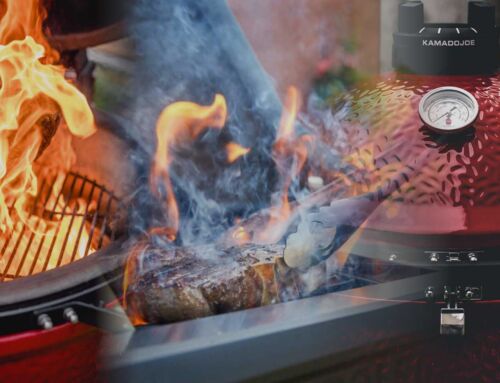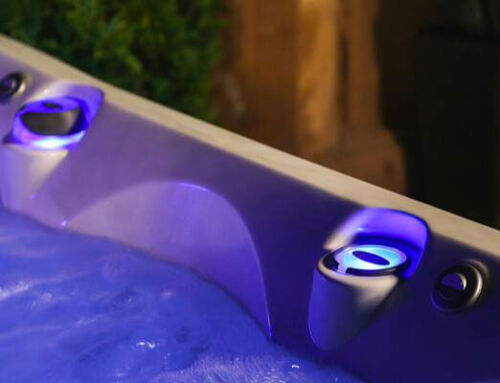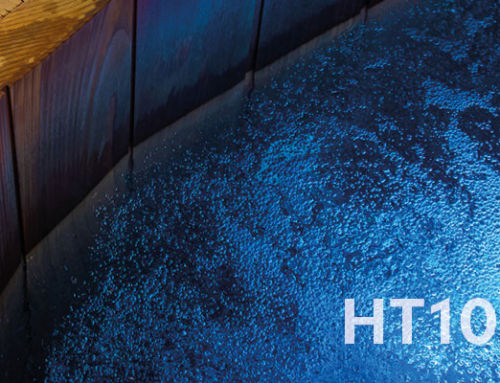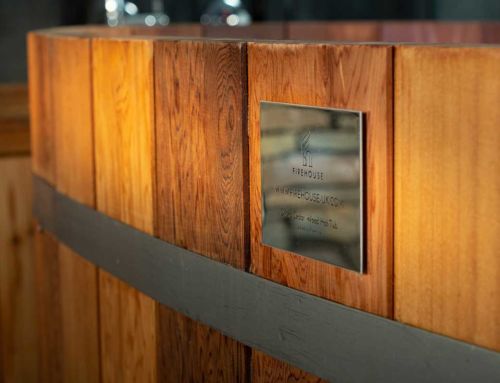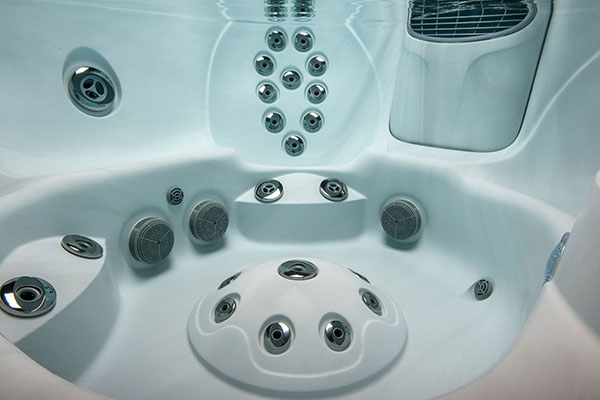
How to clean a Jacuzzi® and keep the water pure
It only takes a few minutes after each hydrotherapy session and a few minutes every week to enjoy crystal clear water in your hot tub and to bathe safely.
Of primary importance to enjoy your Jacuzzi all-year round is to properly balance the water chemistry and to keep the water sanitised. This is not as daunting as it may sound. Using the same technology which purifies bottled drinking water, the Jacuzzi Clearray™ water purification system does most of the work for you. Provided you keep the filters clean, ensure all the systems are functioning properly and check the pH levels, alkalinity and calcium levels of the water regularly, it is not hard to keep the spa water sparkling clean.
Testing is quickly and easily done with test strips after every usage and at least once a week even if the Jacuzzi is not used regularly. If the water chemistry is out of balance, it is also a simple matter to re-balance the hot tub water and the worst-case scenario is to replace the water in the Jacuzzi. This would be the ideal time for a thorough cleaning with a mild soap solution to remove any deposits clinging to the inside of the tub, pipes and jets. It is very important to rinse out all soap before filling the tub with water, otherwise it may lead to foaming.
The first step in keeping your Jacuzzi water clear is to filter out any solid particles. Jacuzzi’s ProClarity system, driven by both the circulation pump and jet pump, is a five-stage system which mechanically removes surface oils, foam and even the finest suspended particles from the water. These filters are easily accessible and should be cleaned at least once a month, or more frequently if the jacuzzi is used a lot, and replaced when no longer performing at their peak. The filters will last much longer if contaminants such as body oils, tanning lotions and cosmetics are kept out of the jacuzzi by taking a shower before entering the water. If oils do accumulate in the filtering system, all filters, pipes and jets need to be cleaned. It may become necessary to replace the water completely every six months or so.
Having removed solids and oils, the Clearray UV-C ultraviolet radiation technology, used in combination with bromine or chlorine, sanitises the water by neutralising pathogens such as algae, bacteria, viruses and fungi, even when the pump is not running. On average, the UV bulb needs to be replaced about once a year, depending on usage and conditions. The ClearRay® Pro3Tech™ Automatic Oxidiser and ozonator purifies and oxidises the water with a colourless gas called trioxygen, which chemically reacts with the water to neutralise bacteria, odours, organic compounds and inorganic compounds. Used in combination with proclear minerals which release trace elements of silver, the water is kept smelling fresh.
Jacuzzi’s Clearray™ water purification system monitors the efficiency of the purification system and can be programmed for optimal sanitisation and to remind you when to clean filters and replace parts.
How do I balance the water chemistry in my Jacuzzi?
Bacteria and other impurities breed more easily in warm water and it is imperative to control this from the word go. To supplement the sophisticated Jacuzzi sanitisation systems, chemicals such as bromine in correct dosages are added to balance the water chemistry such as the pH, alkalinity and calcium hardness.
Maintaining the chemical balance is also a simple process, but requires regular attention. The first step is to achieve and maintain the correct pH balance of the water. The pH balance should be neutral at between 7.2 and 7.6 to avoid skin irritation and corrosion. The lower the figure, the more acidic the water is and the higher the reading is, the more alkaline the water is. If the pH balance is not neutral, it is more difficult to balance the rest of the water chemistry.
If the pH is too low, an alkaline needs to be added and if the pH is too high, an acid needs to be added in small quantities at a time.
Total Alkalinity (TA) measures the water’s ability to maintain the pH balance. If the TA is not correct, the pH balance will fluctuate easily. Recommended TA readings are between 100 and 150. The balance is restored by adding a liquid called Alkalinity Up (sodium hydrogen carbonate) or Alkalinity Down (sodium bisulphate.)
Calcium hardness is the third water chemical that needs to be balanced for proper sanitisation to follow. Calcium hardness refers to the level of calcium in the water, which if too high causes scaling in the filtering, circulation and heating systems. Too little calcium causes the water to attack the metal parts in the jacuzzi, such as heaters, heat exchangers, heater tubes, etc.
The acceptable range of calcium in spa water is 150-250. If the water is too soft, calcium chloride can be used to raise the level. If the water is too hard, a water softener can be used, including ionising the water or adding a sequestering agent, such as Sodium and potassium-based phosphate blends.
Foaming can be caused by water that is too soft, soap, body oils, skin creams, anti-perspiration, excess detergents in bathing suits or other products in the water, or failure to rinse the filter thoroughly after changing the water in the jacuzzi. The best solution is for bathers to shower before entering the jacuzzi. Specially designed floating oil- and foam-absorbing sponges will reduce the amount of oils and foam in the water. Remember to squeeze them out occasionally and to replace them when they start to deteriorate or when they no longer float. A specially formulated anti-foaming agent can also be added to the water. In worst cases, replace the water in the jacuzzi.


